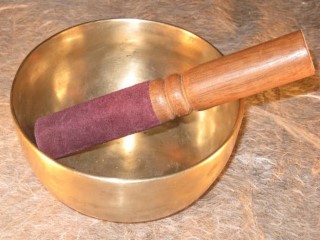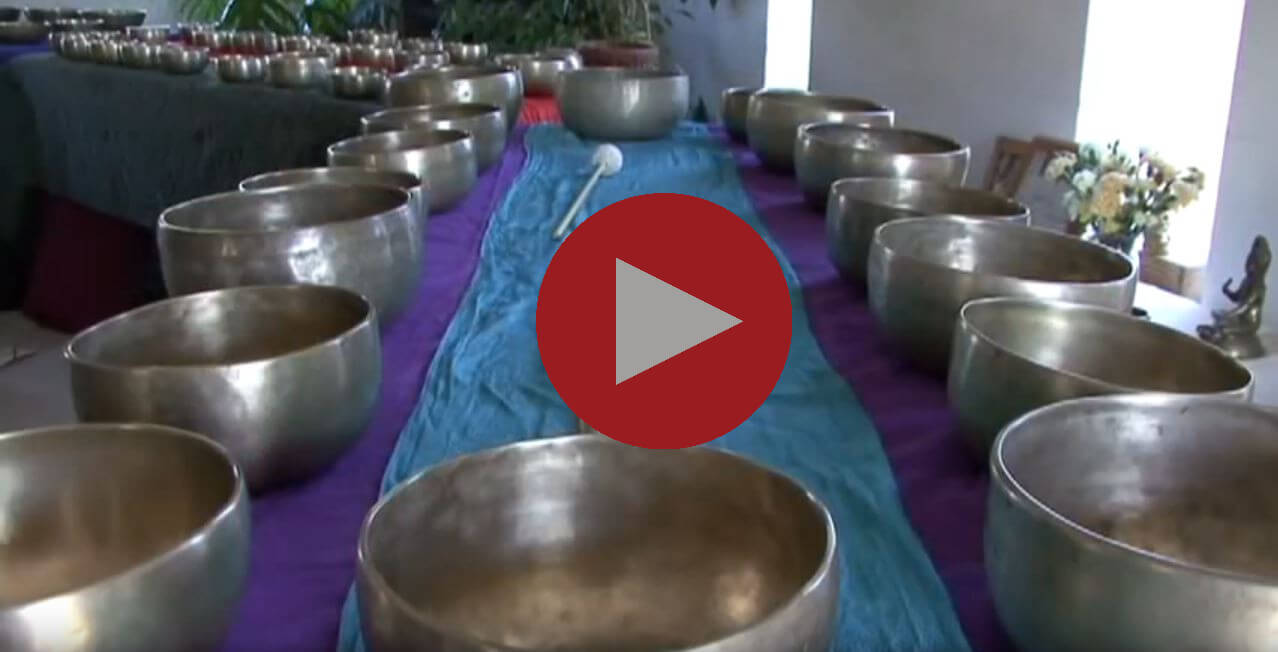Tibetan singing bowls and sets are a mysterious combination of art, science, spirituality, and sound healing; an ancient connection for humanity. This rich mesh of qualities makes for many different paths of enjoyment.
Himalayan Singing Bowls?
Despite the name, Tibetan singing bowls rarely come from Tibet today, especially antique ones. In the 1970’s and 1980’s many ancient bowls made their way over the Himalayas to Nepal where they were sold to tourists or collected and shipped out of the country. That incredible source for singing bowls has long been exhausted. These days the only sources for old bowls are rural areas of the Himalayan mountains and the foothills as well as the provinces of northeast India. Instead of Tibetan, a more exact nomenclature would be Himalayan singing bowls. But who are we to fight popular perception (and SEO) so throughout this website you will see both phrases used interchangeably.
The Essentials for Buying Tibetan Singing Bowls
- Sound
- Sound Healing
- Antiquity
- Resonance
- Structural Integrity
Singing Bowl Sound
There are a lot of reasons for owning Himalayan singing bowls but the place to really start is sound. There are very few sounds that we hear in our daily lives with their unique attention grabbing characteristics. Taste in sound is as individual as taste in food, and there is nothing like a wealth of samples to hone your preferences. When your browse through our singing bowl store, you’ll see that every bowl has individual sound clips that you can listen to. We make great efforts to record the bowls clearly and accurately. As our Guarantee states, we unconditionally guarantee every aspect of each singing bowl and that the sound and appearance match our descriptions. If you are not pleased for any reason with your Tibetan singing bowl sets you may return what you order for a full refund of the cost of the items.
Sound Healing
While the phrase “Tibetan singing bowl” might be a modern construction the blending of sound and practice in Tibet goes back further even than the introduction of Buddhism 1300 years ago. What is the basis of this practice with sound? Humans’ first experience is vibration, which is a window into the potency of sound healing using Tibetan singing bowls. The history of singing bowls in Tibet includes the Bon tradition as well as all the schools of Tibetan Buddhism where bells, horns and gongs are used in ceremony. One early visitor to Tibet reported witnessing a ceremony in which a thousand monks each made a sound with their own bowl.
Antiquity
Over our many decades of playing, buying and selling we have only handled old singing bowls. New bowls can make nice sounds but they lack the character and lineage of genuine antiques. Old brass bowls also have something that new ones simply cannot replicate. When copper and other metals sit together for a while a process of mellowing happens. This is just as true for a brass saxophone as it is for a brass bowl. The wonderful metal objects you see here combine artistry, utility and antiquity. When you review our fine selection, you can be assured each one comes from some time in the past and is not brand new or from recent decades.
Resonance has a subtle but universal appeal. On an objective level resonance is a mathematical relationship between the frequencies of different sounds. On an experiental level, it is the good feeling you experience when you hear it. Resonance is part of the magnetism that draws you into the experience of singing bowls. The varied composition of the metals and the unique hand made shapes of Tibetan singing bowl sets provide the basis for a broad range of tones and relationships. Sometimes the quality of resonance only becomes apparent after you listen to a bowl for a while. Other times you feel it from the first tone. All the bowls that I sell have this subtle quality of resonance. It is one of the things I am looking for on my buying trips to the Himalayas.
Structural integrity essentially has to do with the singing bowl being free of cracks or structural compromises. Mostly this is the case but antique brass can be brittle, handling can be rough, and “issues” can arise.
The most obvious cracks are visual. The location of a crack is important, if it is at the top of the bowl near the rim you are going to have problems. If it is on the bottom or very low on the side there is a good chance it will not degrade the sound quality of the bowl. Cracks that do not go through the bowl, are visible on one side and not the other generally are fine. Size maters really only if the crack is angled to move up the sidewall. You can have a 4 inch bowl with a 2 inch bottom crack that still sounds sweet. Unfortunately, some Tibetan singing bowls and sets have cracks you can hear but not see. These can be very subtle, that is not evident unless you hit a bowl quite hard. If that is not your style, hitting it hard, a sonic cracked bowl can be an excellent value.
We are very careful about bowls with “issues”, and generally avoid bringing them back from the Himalayas. The exception to that are bowls with great sound and cracks in the right places. Still, sometimes bowls arrive with sonic flaws that maybe we missed over there or, more likely, were damaged in transit. Sometimes just the change in air pressure can give a bowl a hairline crack. If there are any issues with structural integrity our standard is to disclose it in the bowl description.
In addition to the ancient art of metallurgy the ancient art of carpet weaving is native to the Himalayas, and in particular, Tibetan carpet weaving. I sell little pieces of this art as practical display mats which help to be a foundation for optimum sound quality.
















